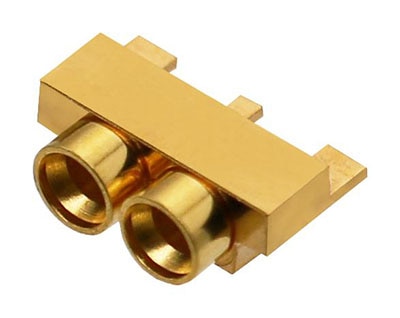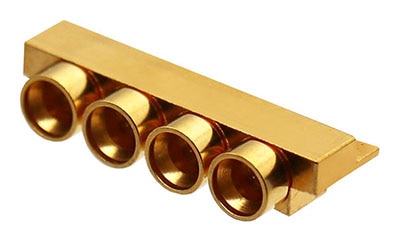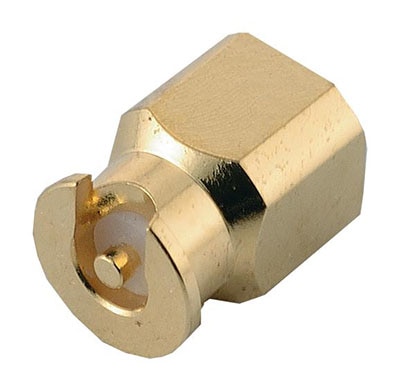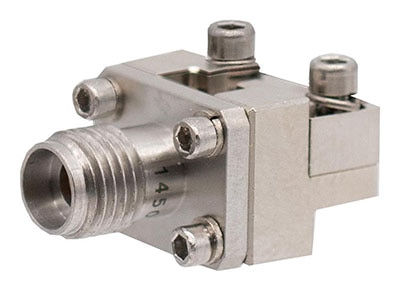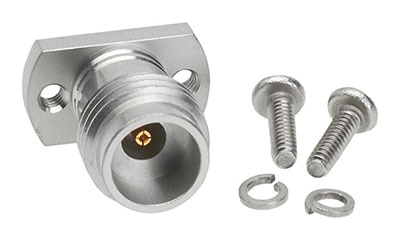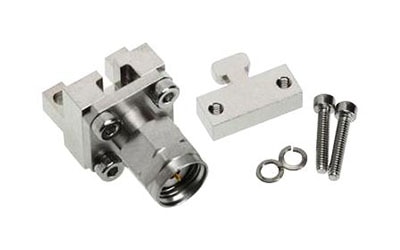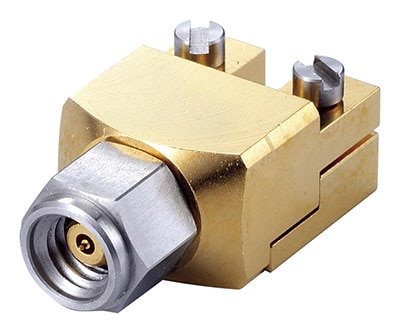An overview of the frequency range used by 5G, including its advantages and challenges.
sponsored by

What is the next generation of mobile technology?
The deployment of 5G will accelerate the realization of smart cities, smart agriculture, and industrial digitization (Industry 4.0). 5G supports faster broadband speeds with lower latencies than any preceding generation of mobile technology. 5G utilizes frequencies ranging from sub-1GHz to 40 GHz and beyond. This article discusses characteristics of the 5G spectrum, advantages and disadvantages, and various connector solutions designed by Cinch Connectivity Solutions for 5G technology.
What is the 5G spectrum?
The 5G spectrum encompasses radio frequencies in the sub-1 GHz range together with millimeter-wave (mmWave) frequencies of 40 GHz and higher. mmWave is the frequency spectrum between 30 GHz and 300 GHz. As depicted in Figure 1, 5G networks fall into three bands of spectrum allocation: low spectrum, mid spectrum, and high spectrum. All three bands deliver 5G service, each with their own mix of range and speed.

Figure 1: 5G Spectrum Bands
Low-band towers offer wide coverage spanning hundreds of square miles, with 5G speeds ranging from 30 to 250 megabits per second (Mbps). A mid-band tower spans a multiple-mile radius with 5G ranging from 100 to 900Mbps. A high-band (mmWave) tower covers a one-mile or lower radius while delivering approximately 1-3Gbps speeds. The higher frequencies allow for the use of smaller antennas that, in turn, allow for more antennas per base station. mmWave frequencies have the greatest potential for high-bandwidth, low-latency 5G connectivity; however, mmWave technology has a few challenges of its own, including signal propagation, blocking, and path loss.
Challenges of mmWave frequencies
mmWave network speeds in the real world vary widely depending on range, signal blockers, and proximity to the nearest small cell or 5G tower. Relative to lower frequency signals, mmWave signals suffer higher free space pathloss (the attenuation in the power density of an electromagnetic wave as it propagates). Physical objects can also cause blockage, reducing signal strength. Humans tend to be significant physical obstacles. Foliage and vegetation can also create problems for mmWave signals. Reflective surfaces, such as walls or tinted glass can cause signal absorption, diffraction, reflection, and/or scattering (penetration loss). Additionally, atmospheric gas molecules, such as oxygen and nitrogen can cause absorption losses.
Advantages of mmWave frequencies
5G and mmWave frequencies have several advantages over previous technologies, the most obvious being higher bandwidth. Applications using microwave frequencies are constrained to a 1 Gbps data transfer rate. The large bandwidth of mmWave frequencies translates to higher data transfer rates, achieving speeds of approximately 10 Gbps. The short wavelengths of mmWave have their own set of advantages. Antenna arrays can be built to a small form factor, creating flexibility with design considerations and maximizing power efficiency. mmWave beams are short-range and narrow, making them less susceptible to interference and interception.
Next Generation 5G Applications
The coverage and bandwidth of 5G makes large-scale IoT deployments possible, strengthening a wide range of applications and services. The telecom industry refers to this as the Massive Internet of Things, or MIoT. In 2017, the International Telecommunication Union’s Radiocommunication Sector (ITU-R) published the IMT-2020 standard, which describes specifications and definitions for 5G. IMT-2020 includes three major use case classes: Enhanced Mobile Broadband (eMBB), Massive Machine Type Communications (mMTC), and Ultra-Reliable and Low Latency Communications (URLLC).
eMBB was initially an extension to 4G, delivering greater bandwidth as well as enabling applications such as streaming real-time video, 4K video, remote classrooms, and enhanced in-vehicle infotainment. It will ultimately enable 360° video streaming, and VR and AR applications. In contrast, mMTC connects a large number of devices in a small area, all of which send data only sporadically and thus, do not require high data transfer rates. mMTC is designed to support IoT use cases. URLLC is designed for mission critical applications, which require low latency and high reliability. Examples include remote surgery and autonomous vehicles.
Connectors
Shop our wide variety of Connectors by Cinch Connectivity Solutions.
Don't forget to join our discussion.
Johnson mmWave connectors
Connectors are important components in the design of an mmWave frequency system. To support such high frequencies, connectors must have an impedance that matches the entire transmission line. Mismatched impedances can cause the signal to be reflected back down the cable. When the forward signal mixes with the reflected signal, a voltage standing wave pattern can occur, reducing efficiency, and causing other problems, such as heating cables or causing amplifiers to fold-back. Connectors supporting mmWave frequency applications must be precisely designed and transfer signal with minimal losses and reflections.
Cinch’s Johnson brand offers a variety of connectors for 5G applications, supporting mmWave frequencies as high as 110 GHz.
Summing up: What is the 5G spectrum?
5G is the next generation of wireless technology with performance that enables and enhances a wide variety of applications. 5G uses a frequency spectrum higher than that of 4G, reaching into mmWave frequencies. However, with the advantages of mmWave signals come the inevitable disadvantages, one of which is signal integrity through transmission lines. Connectors that support mmWave frequencies have the strictest performance requirements. 5G connectors from Cinch Connectivity Solutions have the precision, performance, and quality required to meet the increased technical demands of the mmWave spectrum.
For more information on 5G, take a look at some of our related content:
- eBook: What you need to know about 5G
- Webinar: New Passive Technologies for 5G Applications
- Tech Spotlight: Beyond 100 GHz - Connector Design for mmWave (and Sub-mmWave) Frequencies
- Tech Spotlight: How 5G Technology Influences Connector Design for High Frequency, RF and Microwave Applications
- Tech Spotlight: How to Prevent EMI in 5G Applications
- Tech Spotlight: TCXOs for 5G Applications
What do you think are the new applications or features that will make users want to adopt 5G?
Please tell us in the Comments section below.

